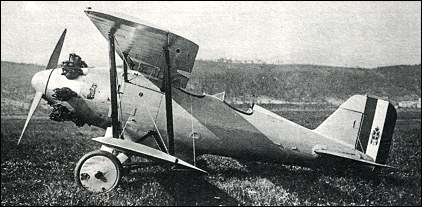Piaggio P.11 on:
[Wikipedia]
[Google]
[Amazon]
The Blackburn F.2 Lincock was a British single-seat


lightweight fighter
The Lightweight Fighter (LWF) program was a United States Air Force technology evaluation program initiated in the late 1960s by a group of officers and defense analysts known as the "Fighter Mafia". It was spurred by then-Major John Boyd (milit ...
produced by Blackburn Aircraft Limited
Blackburn () is an industrial town and the administrative centre of the Blackburn with Darwen borough in Lancashire, England. The town is north of the West Pennine Moors on the southern edge of the Ribble Valley, east of Preston and north- ...
.
Design and development
In 1928 Blackburn designed and built a private venture lightweightbiplane
A biplane is a fixed-wing aircraft with two main wings stacked one above the other. The first powered, controlled aeroplane to fly, the Wright Flyer, used a biplane wing arrangement, as did many aircraft in the early years of aviation. While ...
fighter powered by an Armstrong Siddeley Lynx IVC
The Armstrong Siddeley Lynx is a British seven-cylinder aero engine developed by Armstrong Siddeley. Testing began in 1920 and 6,000 had been produced by 1939. In Italy Alfa Romeo built a licensed version of this engine named the Alfa Romeo ...
engine. The Blackburn F.2 Lincock was of wooden construction and first appeared in May 1928. It performed well in demonstrations but failed to gain any orders. The Canadian
Canadians (french: Canadiens) are people identified with the country of Canada. This connection may be residential, legal, historical or cultural. For most Canadians, many (or all) of these connections exist and are collectively the source of ...
government showed an interest in the design, and a metal construction variant (the Lincock II) was built. It was tested in Canada at Camp Borden in 1930 where there was interest in using the Lincock as an advanced trainer, but the type was not ordered. It was later used to perform public aerobatic displays in 1933 and 1934.
The final version was the Lincock III of which five were produced, two were delivered to China, two to Japan and one retained as a demonstrator. Interest from Italy resulted in Piaggio
Piaggio & C. SpA (Piaggio ) is an Italian motor vehicle manufacturer, which produces a range of two-wheeled motor vehicles and compact commercial vehicles under seven brands: Piaggio, Vespa, Gilera, Aprilia, Moto Guzzi, Derbi, and Scarabeo. Its ...
acquiring a licence to produce a two-seat version as an aerobatic trainer, though only one Piaggio P.11 was built.
Variants
;Lincock I:Wooden-construction prototype, one built. ;Lincock II:Metal-construction prototype, one built. ;Lincock III:Production version, five built. ;Piaggio P.11:two-seat aerobatic trainer, one built inItaly
Italy ( it, Italia ), officially the Italian Republic, ) or the Republic of Italy, is a country in Southern Europe. It is located in the middle of the Mediterranean Sea, and its territory largely coincides with the homonymous geographical re ...
.
Operators
; *Chinese Nationalist Air Force
Chinese can refer to:
* Something related to China
* Chinese people, people of Chinese nationality, citizenship, and/or ethnicity
**''Zhonghua minzu'', the supra-ethnic concept of the Chinese nation
** List of ethnic groups in China, people of va ...
received two aircraft.
;
*Imperial Japanese Army Air Force
The Imperial Japanese Army Air Service (IJAAS) or Imperial Japanese Army Air Force (IJAAF; ja, 大日本帝國陸軍航空部隊, Dainippon Teikoku Rikugun Kōkūbutai, lit=Greater Japan Empire Army Air Corps) was the aviation force of the Im ...
received two aircraft.
Specifications (Lincock III)

References
* * * {{Piaggio aircraft 1920s British fighter aircraft Lincock Single-engined tractor aircraft Biplanes Aircraft first flown in 1928